-
 Bitcoin
Bitcoin $117500
2.04% -
 Ethereum
Ethereum $3759
3.02% -
 XRP
XRP $3.171
3.30% -
 Tether USDt
Tether USDt $1.000
0.03% -
 BNB
BNB $782.4
2.52% -
 Solana
Solana $187.2
5.62% -
 USDC
USDC $0.0000
0.02% -
 Dogecoin
Dogecoin $0.2380
5.26% -
 TRON
TRON $0.3175
1.07% -
 Cardano
Cardano $0.8227
4.03% -
 Hyperliquid
Hyperliquid $44.50
5.44% -
 Sui
Sui $4.020
10.07% -
 Stellar
Stellar $0.4396
6.28% -
 Chainlink
Chainlink $18.32
4.55% -
 Hedera
Hedera $0.2628
10.71% -
 Bitcoin Cash
Bitcoin Cash $554.8
4.90% -
 Avalanche
Avalanche $24.20
4.60% -
 Litecoin
Litecoin $113.7
2.31% -
 Shiba Inu
Shiba Inu $0.00001413
5.99% -
 UNUS SED LEO
UNUS SED LEO $8.984
0.11% -
 Toncoin
Toncoin $3.326
7.22% -
 Ethena USDe
Ethena USDe $1.001
0.00% -
 Uniswap
Uniswap $10.49
4.56% -
 Polkadot
Polkadot $4.092
4.02% -
 Monero
Monero $326.6
1.30% -
 Dai
Dai $1.000
-0.01% -
 Bitget Token
Bitget Token $4.570
2.49% -
 Pepe
Pepe $0.00001267
5.10% -
 Aave
Aave $297.3
3.10% -
 Cronos
Cronos $0.1344
4.10%
How to use the trend strength gradient indicator to filter the noise of the oscillating market?
The trend strength gradient indicator helps crypto traders filter market noise by identifying strong trends, enabling informed decisions and optimal trade timing.
Jun 06, 2025 at 06:15 pm
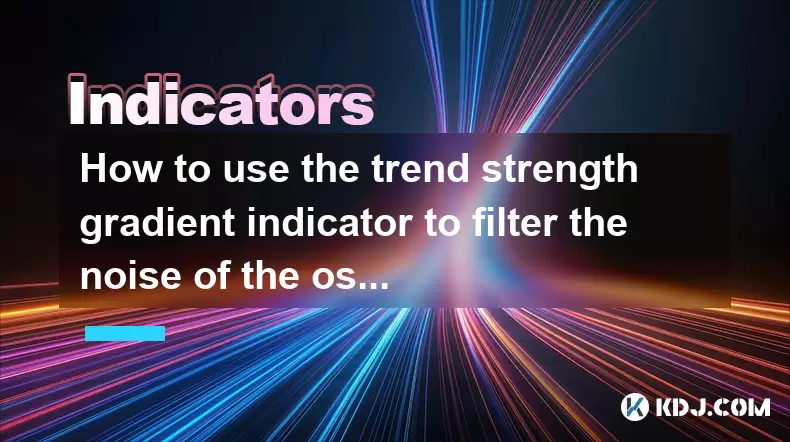
The trend strength gradient indicator is a powerful tool used by cryptocurrency traders to analyze market trends and filter out the noise that often accompanies oscillating markets. This indicator helps traders identify the strength of a trend, enabling them to make more informed decisions. In this article, we will explore how to effectively use the trend strength gradient indicator to enhance your trading strategy and minimize the impact of market noise.
Understanding the Trend Strength Gradient Indicator
The trend strength gradient indicator is designed to measure the momentum of price movements in the cryptocurrency market. It provides a visual representation of the trend's strength, typically through a series of colored bars or lines that change based on the intensity of the trend. The primary purpose of this indicator is to help traders distinguish between strong trends and weak, noisy fluctuations.
To use this indicator effectively, it is essential to understand its components. The indicator usually displays a gradient scale, with different colors representing varying levels of trend strength. For instance, green might indicate a strong bullish trend, red a strong bearish trend, and gray or neutral colors indicating a weak or non-existent trend. By observing these colors, traders can quickly gauge the market's direction and strength.
Setting Up the Trend Strength Gradient Indicator
Before you can use the trend strength gradient indicator to filter market noise, you need to set it up correctly on your trading platform. Here are the steps to do so:
Choose a reliable trading platform: Ensure that your chosen platform supports the trend strength gradient indicator. Popular platforms like TradingView, MetaTrader, and others often have this indicator available.
Add the indicator to your chart: Navigate to the indicators section of your platform and search for the trend strength gradient indicator. Once found, add it to your chart.
Adjust the settings: Depending on your trading style and the specific cryptocurrency you are analyzing, you may need to adjust the indicator's settings. Common settings include the period length, which determines how many price points are used to calculate the trend strength, and the color scheme, which can be customized to your preference.
Confirm the indicator's placement: Ensure that the indicator is correctly placed on your chart and that it is not overlapping with other indicators or price data, which could lead to confusion.
Interpreting the Trend Strength Gradient Indicator
Once the trend strength gradient indicator is set up on your chart, the next step is to interpret its signals accurately. Here's how to do it:
Identify the trend strength: Look at the colors displayed by the indicator. A strong trend is typically represented by vibrant colors, such as bright green for a bullish trend or bright red for a bearish trend. Weak or non-existent trends are usually shown in muted or neutral colors.
Analyze the gradient changes: Pay attention to how the colors change over time. A gradual shift from a neutral color to a vibrant color indicates a strengthening trend, while a shift from a vibrant color to a neutral color suggests a weakening trend. These changes can help you anticipate potential trend reversals or continuations.
Combine with other indicators: While the trend strength gradient indicator is powerful on its own, it can be even more effective when combined with other technical indicators, such as moving averages or the Relative Strength Index (RSI). This combination can provide a more comprehensive view of the market and help you make more informed trading decisions.
Using the Trend Strength Gradient Indicator to Filter Market Noise
The primary goal of using the trend strength gradient indicator is to filter out the noise of an oscillating market. Here's how to achieve this:
Focus on strong trends: When the indicator shows a strong trend, it suggests that the market is moving in a clear direction. During these periods, the impact of short-term fluctuations or noise is minimized. By focusing on these strong trends, you can avoid being misled by minor price movements.
Ignore weak trends: When the indicator displays weak or neutral colors, it indicates that the market is oscillating without a clear direction. During these times, the noise can be significant, making it challenging to predict future price movements. By recognizing these weak trends, you can choose to stay out of the market or use other strategies that are better suited to range-bound conditions.
Use the indicator for entry and exit points: The trend strength gradient indicator can also help you determine optimal entry and exit points for your trades. Enter a trade when the indicator shows a strong trend emerging, and consider exiting when the trend starts to weaken. This approach can help you capitalize on strong trends while minimizing exposure to market noise.
Practical Example: Using the Trend Strength Gradient Indicator in a Real Trading Scenario
To illustrate how the trend strength gradient indicator can be used to filter market noise, let's consider a practical example involving Bitcoin (BTC).
Initial Setup: You add the trend strength gradient indicator to your Bitcoin chart on TradingView, setting the period length to 14 and using the default color scheme.
Observation: Over the past few days, the indicator has been showing neutral gray colors, indicating a weak or non-existent trend. The price of Bitcoin has been oscillating between $30,000 and $32,000, with frequent short-term fluctuations.
Trend Emergence: Suddenly, the indicator begins to show a shift towards bright green, signaling the emergence of a strong bullish trend. The price of Bitcoin starts to move decisively above $32,000.
Action: Based on the indicator's signal, you decide to enter a long position on Bitcoin. You set your entry point at $32,500, anticipating further upward movement.
Monitoring: As the trend continues, the indicator remains bright green, confirming the strength of the bullish trend. The price of Bitcoin climbs to $35,000.
Exit Strategy: Eventually, you notice the indicator starting to shift back towards neutral colors, suggesting that the trend is weakening. You decide to exit your position at $34,500, locking in your profits and avoiding potential reversals.
In this example, the trend strength gradient indicator helped you filter out the noise of the oscillating market by focusing on the strong bullish trend. By entering and exiting the trade based on the indicator's signals, you were able to capitalize on the trend while minimizing the impact of short-term fluctuations.
FAQs
Q: Can the trend strength gradient indicator be used for all cryptocurrencies?
A: Yes, the trend strength gradient indicator can be used for all cryptocurrencies. However, its effectiveness may vary depending on the specific cryptocurrency's volatility and market conditions. It is essential to test the indicator on different cryptocurrencies and adjust its settings as needed to achieve the best results.
Q: How often should I check the trend strength gradient indicator?
A: The frequency of checking the trend strength gradient indicator depends on your trading style. For short-term traders, checking the indicator every few hours or even more frequently may be necessary. For long-term traders, checking the indicator daily or weekly might be sufficient. It is crucial to align the indicator's monitoring with your trading strategy.
Q: Can the trend strength gradient indicator be used in conjunction with fundamental analysis?
A: Yes, the trend strength gradient indicator can be used alongside fundamental analysis to enhance your trading decisions. While the indicator focuses on technical aspects of the market, fundamental analysis can provide insights into the underlying factors driving price movements. Combining both approaches can give you a more comprehensive understanding of the market.
Q: Is the trend strength gradient indicator suitable for beginners?
A: The trend strength gradient indicator can be suitable for beginners, but it requires a basic understanding of technical analysis and trading concepts. Beginners should start by learning how to interpret the indicator's signals and practice using it in a demo trading environment before applying it to real trades. As with any trading tool, it is essential to combine the indicator with proper risk management and trading strategies.
Disclaimer:info@kdj.com
The information provided is not trading advice. kdj.com does not assume any responsibility for any investments made based on the information provided in this article. Cryptocurrencies are highly volatile and it is highly recommended that you invest with caution after thorough research!
If you believe that the content used on this website infringes your copyright, please contact us immediately (info@kdj.com) and we will delete it promptly.
- XRP Price Swings, Unilabs Listing Heats Up, and Utility Coins Take Center Stage: What's the Buzz?
- 2025-07-26 23:30:12
- Ethereum Meme Coins: Can Punisher Coin Deliver 55x Gains?
- 2025-07-26 22:50:12
- DIA, Web3, and the AI Hype: Riding the Crypto Wave
- 2025-07-26 22:50:12
- Stablecoin Growth on Wall Street: Analyst Views and the GENIUS Act Effect
- 2025-07-26 23:30:12
- Mantra OM in 2025: Will the Future Forgive the Past?
- 2025-07-26 22:30:12
- Ancient Bitcoin Awakening: Sell-Side Pressure Looms? Crypto Analytics Weigh In
- 2025-07-26 22:30:12
Related knowledge
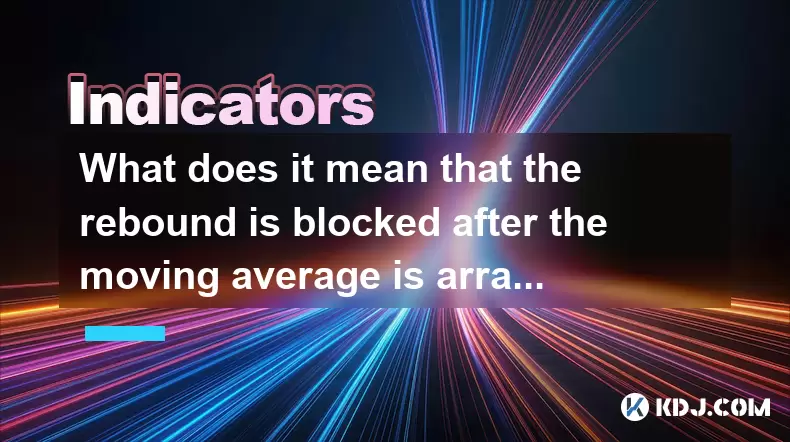
What does it mean that the rebound is blocked after the moving average is arranged in a short position for the first time?
Jul 26,2025 at 10:51am
Understanding the Short-Term Moving Average ConfigurationWhen traders refer to a 'short position arrangement' in moving averages, they are describing ...
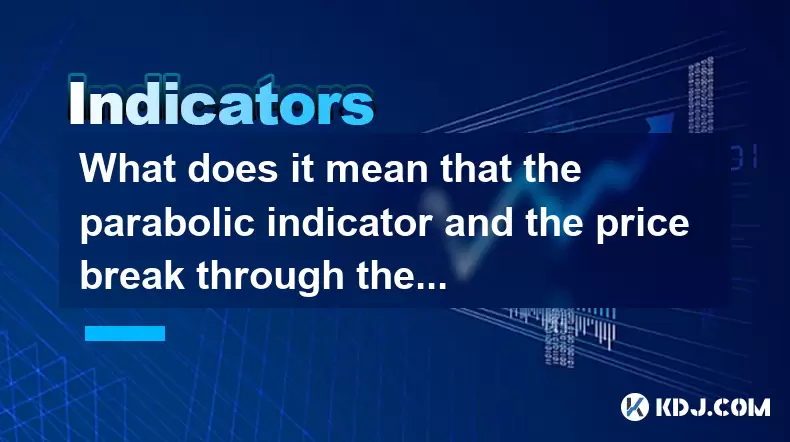
What does it mean that the parabolic indicator and the price break through the previous high at the same time?
Jul 26,2025 at 07:22pm
Understanding the Parabolic Indicator (SAR)The Parabolic SAR (Stop and Reverse) is a technical analysis tool developed by J. Welles Wilder to identify...
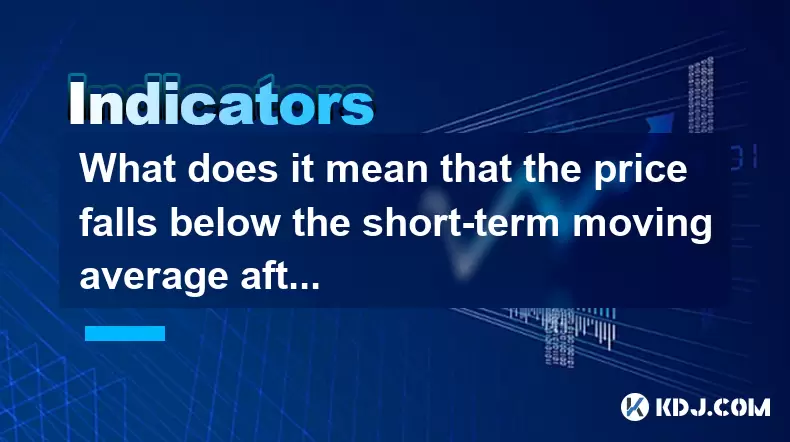
What does it mean that the price falls below the short-term moving average after the RSI top divergence?
Jul 26,2025 at 11:01pm
Understanding RSI Top Divergence in Cryptocurrency TradingThe Relative Strength Index (RSI) is a momentum oscillator widely used in cryptocurrency tra...
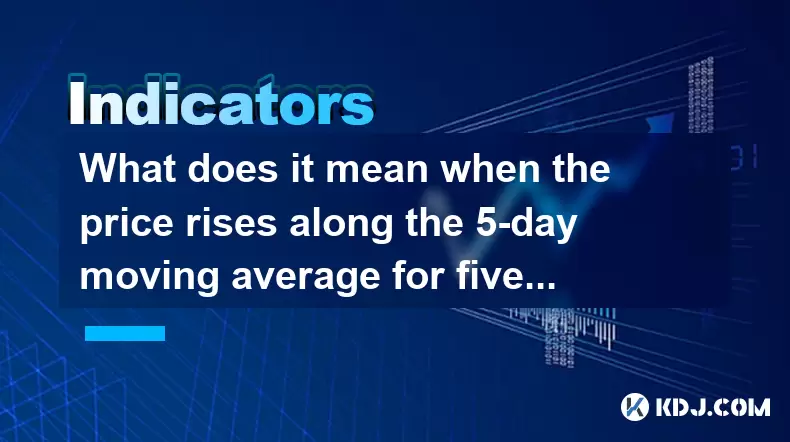
What does it mean when the price rises along the 5-day moving average for five consecutive days?
Jul 26,2025 at 08:07am
Understanding the 5-Day Moving Average in Cryptocurrency TradingThe 5-day moving average (5DMA) is a widely used technical indicator in cryptocurrency...
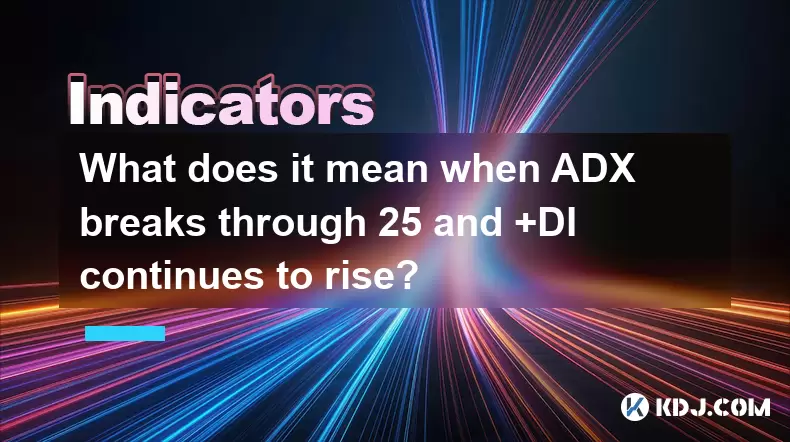
What does it mean when ADX breaks through 25 and +DI continues to rise?
Jul 26,2025 at 07:00pm
Understanding the ADX Indicator and Its ThresholdsThe Average Directional Index (ADX) is a technical analysis tool used to measure the strength of a t...
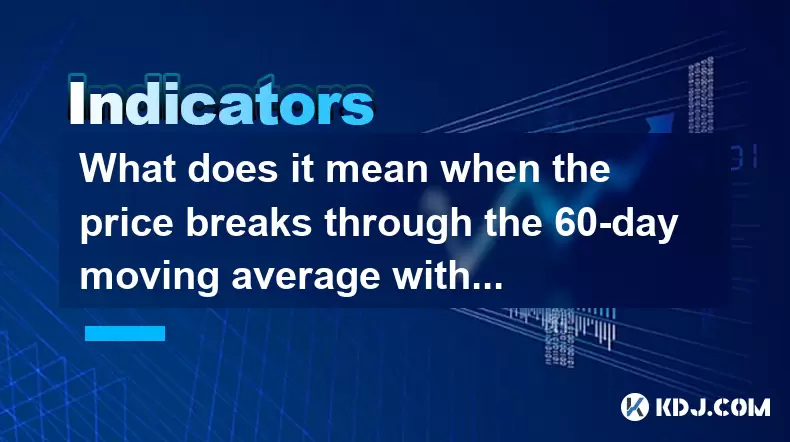
What does it mean when the price breaks through the 60-day moving average with a large volume but shrinks the next day?
Jul 26,2025 at 06:01am
Understanding the 60-Day Moving Average in Cryptocurrency TradingThe 60-day moving average (60DMA) is a widely used technical indicator in the cryptoc...

What does it mean that the rebound is blocked after the moving average is arranged in a short position for the first time?
Jul 26,2025 at 10:51am
Understanding the Short-Term Moving Average ConfigurationWhen traders refer to a 'short position arrangement' in moving averages, they are describing ...

What does it mean that the parabolic indicator and the price break through the previous high at the same time?
Jul 26,2025 at 07:22pm
Understanding the Parabolic Indicator (SAR)The Parabolic SAR (Stop and Reverse) is a technical analysis tool developed by J. Welles Wilder to identify...

What does it mean that the price falls below the short-term moving average after the RSI top divergence?
Jul 26,2025 at 11:01pm
Understanding RSI Top Divergence in Cryptocurrency TradingThe Relative Strength Index (RSI) is a momentum oscillator widely used in cryptocurrency tra...

What does it mean when the price rises along the 5-day moving average for five consecutive days?
Jul 26,2025 at 08:07am
Understanding the 5-Day Moving Average in Cryptocurrency TradingThe 5-day moving average (5DMA) is a widely used technical indicator in cryptocurrency...

What does it mean when ADX breaks through 25 and +DI continues to rise?
Jul 26,2025 at 07:00pm
Understanding the ADX Indicator and Its ThresholdsThe Average Directional Index (ADX) is a technical analysis tool used to measure the strength of a t...

What does it mean when the price breaks through the 60-day moving average with a large volume but shrinks the next day?
Jul 26,2025 at 06:01am
Understanding the 60-Day Moving Average in Cryptocurrency TradingThe 60-day moving average (60DMA) is a widely used technical indicator in the cryptoc...
See all articles

























































































